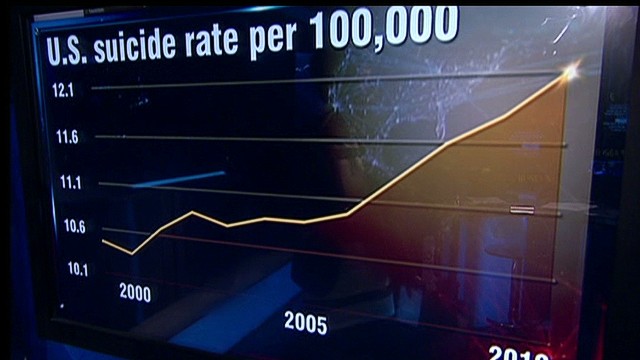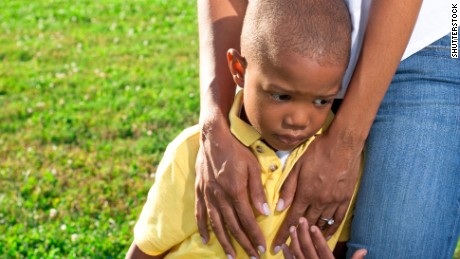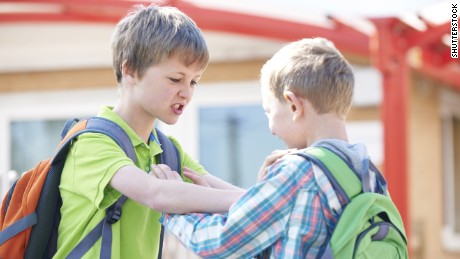Story highlights
- There has been a recent increase in suicide death rates among black children
- More research is needed to explain the troubling trend, experts say
(CNN)There has been a disturbing increase in suicide rates among elementary school-age black children in recent years in the United States, and yet researchers aren't quite sure why.
When compared with early adolescents, younger children who die by suicide are more likely to be black boys who hang or suffocate to death, suggests a new paper published in the journal Pediatrics on Monday.
"I think the biggest finding is that -- even though suicide is extremely rare in children -- children sometimes can and sometimes will think about suicide and make suicide attempts," said Jeff Bridge, an epidemiologist and director of the Center for Suicide Prevention and Research at Nationwide Children's Hospital in Columbus, Ohio, who was a co-author of the paper.
"So that's why it's important for parents, pediatricians and teachers to be able to identify the warning sides of suicide in children and take appropriate steps when warning signs are present," he said.
Children vs. early adolescents
The paper included surveillance data on suicide deaths in 17 states from 2003 to 2012. The data were collected by the Centers for Disease Control and Prevention's National Violent Death Reporting System.
The researchers obtained the data in the system on children 5 to 14 years old whose cause of death was suicide; this resulted in 693 suicides that researchers then examined and analyzed.
As suicide deaths among children are rare, the researchers noted that the suicide rate among 5- to 11-year-olds is only 0.17 per every 100,000 persons. Among 12- to 17-year-olds, the rate is 5.18 per 100,000.
The researchers compared the data for children 5-11 who died by suicide with those in their early adolescence, ages 12-14. They found that there were significantly more black males who died by suicide among the younger group than in the early adolescents.
Among the younger children, 36.8% of suicide deaths involved a black child, whereas that rate was only 11.6% of deaths among the early adolescents. In general, black Americans make up about 13.3% of the population.
According to the findings, 85.1% of suicide deaths among the younger children involved a male, whereas 69.6% of the early adolescent deaths involved a male.
Suicide by hanging or strangulation was found to be more common among black youth in both age groups. Black youth were also less likely to leave a suicide note.
Disparities discovered
The new findings mirror a study published last year by the same research team in which data showed suicide rates among black boys ages 5 to 11 have doubled in the past two decades, while rates among white boys of the same age decreased.
More research is needed to determine what factors could be associated with this racial disparity, Bridge said.
However, "black youth may experience disproportionate exposure to violence or traumatic stressors, both of which have been associated with suicidal behavior. Also, research has shown that black youth are less likely to receive services for depression, suicidal ideation, and other mental health problems compared with non-black youth," the researchers wrote.
When examining racial differences in suicide rates in adolescents and young adults, the CDC data show that Native American youth are at the highest risk of suicide (PDF) among all groups.
The new paper also revealed that children who died by suicide in general were more likely than the early adolescent suicide decedents to have problems with family or friends, were more likely to have higher rates of ADD/ADHD and were less likely to exhibit a depressed mood. Higher rates of depression were found among the early adolescents compared with children who died by suicide.
However, James Mazza, a professor in the school psychology program at the University of Washington who has studied the issue of childhood and adolescent suicide for 25 years, said the association with children who were diagnosed with ADHD should be interpreted with caution.
"Regarding the diagnosis of attention deficit disorder, it is made by gathering information from teachers or parents, compared to self-report information that is usually completed by the adolescent to make a diagnosis of depression. This is an important methodological distinction that is not mentioned in the paper, especially given the overidentification of ADHD among elementary students," said Mazza, who was not involved in the new paper.
"It is important to keep in mind that kids who are identified for behavioral issues in elementary school are disproportionally ethnic minorities and thus would likely have an over-representation among black children receiving such services, which may be linked to the finding reported in the new paper," he added.
Nonetheless, the researchers found a surprising similarity between the children and early adolescents who died by suicide: It was likely in both groups that the people who died may have told someone about their suicidal thoughts.
"I was surprised to find that almost 30% of children who died by suicide disclosed suicidal intent to another person prior to the suicide. This rate was similar to that of early adolescents who died by suicide," Bridge said.
Know the warning signs
The finding suggests that it's important for parents, teachers and other adults who interact directly with children to recognize the warning signs of suicide and know what steps to take when suicidal intent is disclosed, Bridge added.
"Examples of warning signs include a child making suicidal statements, being unhappy for an extended period, suddenly withdrawing from friends or school activities or being increasingly aggressive or irritable," he said.
"It is important to ask children directly about suicide if there is a safety concern. Research has refuted the notion that asking children directly about suicide will trigger suicidal thinking or behavior. It does not hurt to ask. In fact, asking about suicide leads to hope for at-risk youth."
According to the American Association of Suicidology, the following behaviors or symptoms may signal a suicidal crisis in a young person, and a mental health professional should be consulted:
- Feelings of hopelessness
- Anxiety, agitation, trouble sleeping or sleeping all of the time
- Expressions of having no reason for living or no sense of purpose in life
- Feelings of being trapped, like there's no way out
- Increased alcohol and/or drug use
- Withdrawal from friends, family and community
- Rage, uncontrolled anger, expressions of wanting or seeking revenge
- Reckless behavior or more risky activities, seemingly without thinking
- Dramatic mood changes
- Giving away prized possessions
Nearly 40% of young adults with a history of suicide attempts made their first attempt before entering high school, according to a 2011 study led by Mazza that published in the Journal of Adolescent Health.
GET HELP
Call the National Suicide Prevention Lifeline: 1-(800)-273-8255
One of the biggest takeaway messages from that previous study and now the new research is that it's OK to talk to children about emotions, depression and suicide, said Mazza, former president of the American Association of Suicidology.
"We can start talking about the issues of mental health and emotions around second and first grade, even as early as kindergarten," he said. "Be proactive about it, and don't be alarmed if your child has something to say that surprises you if they do feel hurt or feel trapped in their current situation."











